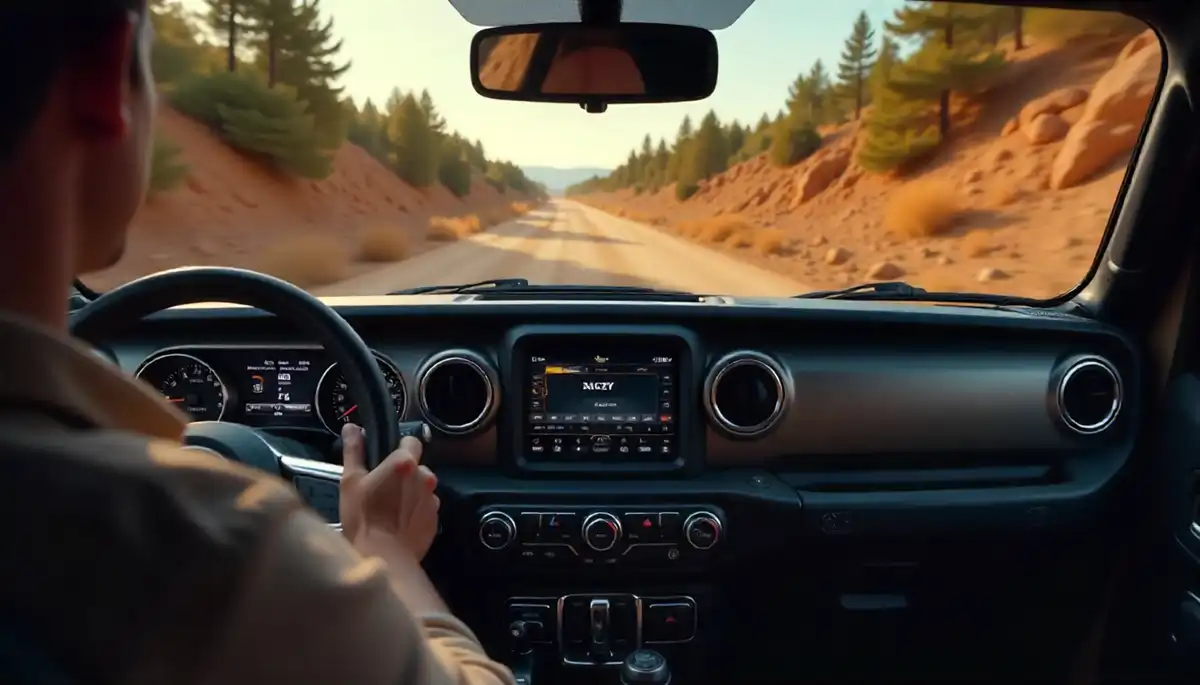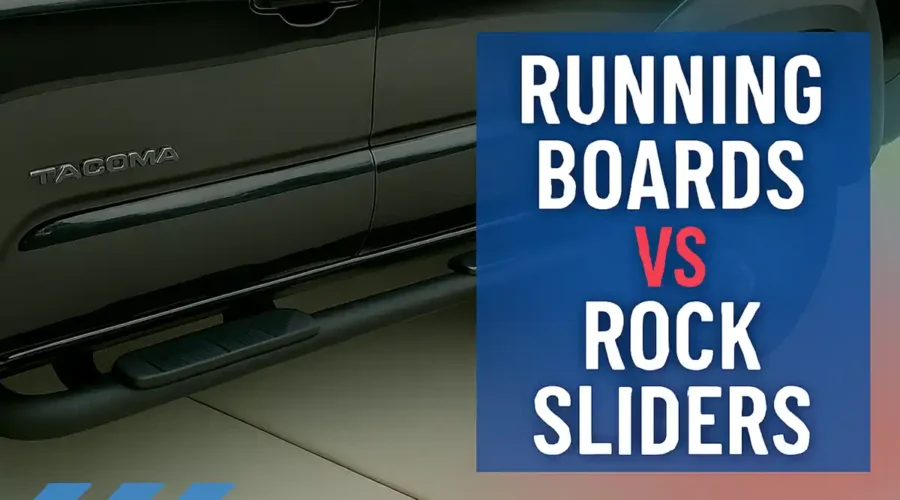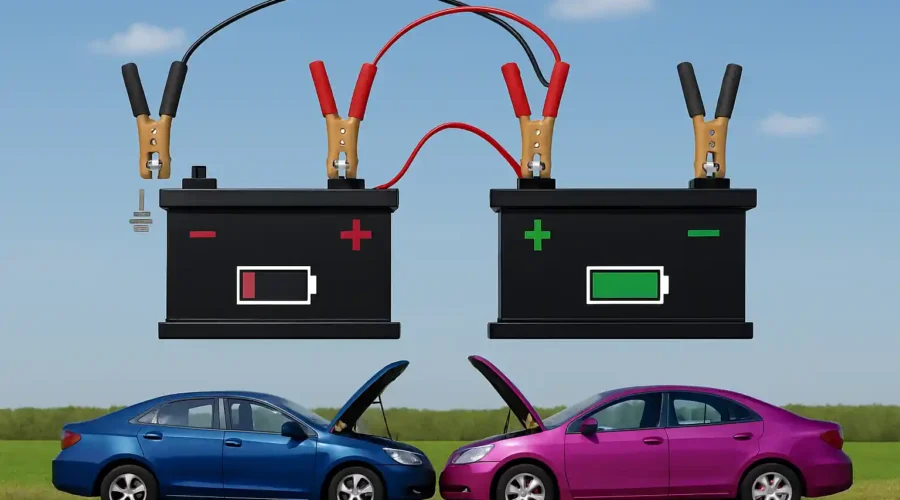Switching between 2H and 4H in a Jeep Wrangler Automatic can be done effortlessly if you know the right steps. As you tackle diverse terrains, the ability to change gears becomes crucial for optimal driving performance. This process ensures the vehicle adapts to different environments seamlessly, making your adventure smoother and safer.
To shift from 2H to 4H, reduce your speed to under 55 mph. With the vehicle in motion, simply pull the transfer case lever from 2H directly to 4H. This feature, introduced in modern Jeep models, combines historical robustness with contemporary ease, helping you conquer any terrain with confidence.
- Reduce your speed to below 55 mph.
- Locate the transfer case lever near the center console.
- Gently pull the lever from 2H to 4H while driving.
- Listen for a click and check dashboard indicator lights confirm the switch.

How to Switch From 2h to 4h Jeep Wrangler Automatic
Switching your Jeep Wrangler from 2H to 4H is essential for tackling different road conditions effectively. First, make sure you’re driving at a speed below 55 mph. This ensures a smooth transition. Reducing your speed is crucial to prevent any potential issues with the transfer case. Always be mindful of your current speed before making the shift.
Next, locate the transfer case lever near the center console. Gently pull the lever from the 2H position towards the 4H mark. This change can be done without stopping the vehicle, making it convenient for drivers. Listen for a slight click which indicates the shift is complete. Feel the difference in handling almost immediately.
After shifting, check the dashboard for indicator lights. These lights confirm the Jeep is now in 4H mode. If the light doesn’t illuminate, the shift may not have been successful. Attempt shifting again while ensuring your speed is appropriate. Watch for the indicator to turn on before proceeding on your journey.
In 4H mode, your Jeep distributes torque to both front and rear axles. This provides better traction on slippery or uneven terrains. It’s particularly useful in conditions like snow, mud, and sand. Just remember to switch back to 2H when driving on dry, even roads. This helps maintain your vehicle’s performance and efficiency.
Four Wheel Drive Operation – Four Position | How To | 2021 Jeep Wrangler/Gladiator
Step #1: Understand Your Jeep’s Transfer Case
Understanding your Jeep’s transfer case is the first step in mastering its 4WD capabilities. The transfer case is part of the drivetrain and is responsible for directing power to the front and rear axles. It allows you to switch between 2H, 4H, and 4L modes. Knowing how this component works helps you make more informed decisions while driving off-road. This knowledge will boost your confidence on different terrains.
Most Jeep Wranglers come with either the Command-Trac or Selec-Trac systems. Each system has its nuances but provides similar functions. Command-Trac is typically found in models like the Jeep Sport and Rubicon. Selec-Trac offers full-time 4WD, ideal for mixed driving conditions. Knowing which system your Jeep has will guide your usage.
The 2H mode uses rear-wheel drive for everyday driving. 4H engages both front and rear axles, distributing power for better traction. The 4L setting is used for extreme off-road conditions. This setting provides maximum torque for climbing steep slopes and tackling rough terrains. Familiarize yourself with these modes for effective driving.
Regular maintenance of the transfer case is essential. Check the fluids and perform routine inspections to ensure it operates smoothly. Neglecting this can lead to mechanical issues. Refer to your vehicle owner’s manual for guidance. Always follow these instructions to maintain your Jeep’s peak performance.
Step #2: Check the Vehicle’s Speed
Checking your vehicle’s speed is a crucial step before switching from 2H to 4H. This ensures the transition is smooth and prevents mechanical issues. Always reduce your Jeep’s speed to below 55 mph. Driving too fast can make shifting difficult. Ensuring a slower speed helps in effective engagement of the 4WD system.
Maintaining the right speed can prevent wear and tear on the transfer case. Switching gears at higher speeds may cause grinding noises. This can lead to long-term damage. Ideally, a slower speed allows the drivetrain to adjust smoothly. Knowing this can save you from potential repairs.
Sometimes, varying road conditions require immediate adjustment of speed. On surfaces like snow or mud, you may need to switch to 4H quickly. Reducing your speed beforehand makes this switch effective. Proper speed management also ensures better vehicle control. Always be aware of your current speed and adjust as necessary.
Regular monitoring of your speedometer is a good habit. It’s easy to lose track of speed, especially on highways or tricky terrains. Keeping an eye on your speed helps in making timely gear shifts. Use modern features like cruise control for assistance. These small practices contribute to a longer-lasting vehicle.
Step #3: Shift the Transfer Lever
Shifting the transfer lever is a simple but essential step when switching from 2H to 4H. First, locate the transfer lever on your Jeep Wrangler. It is usually positioned near the center console. With the vehicle running and moving at an appropriate speed, pull the lever from 2H towards the 4H mark. This action engages the four-wheel drive system for enhanced traction.
Ensure your movements are smooth and steady when pulling the transfer lever. Jerky or forceful shifts can cause internal damage to the transfer case. You should feel a noticeable click or resistance when the shift is complete. If the lever does not move easily, avoid forcing it. Recheck the vehicle’s speed and try again.
After shifting, always check the dashboard for confirmation lights. These lights ensure that the vehicle is now in 4H mode. The indicator light will illuminate, showing you that the shift was successful. If the light does not turn on, it’s best to repeat the process. This verification helps prevent any possible drivetrain issues.
In certain situations, you may encounter resistance when moving the lever. This could be due to improper speed or drivetrain binding. Gently release the gas pedal to neutralize the tension. Reattempt the shift once the vehicle stabilizes. Following these steps can make the process smooth and hassle-free.
Finally, practice makes perfect. Familiarize yourself with shifting the transfer lever in various conditions. Off-road driving or challenging terrains can benefit from timely 4H engagement. Regular practice will build your confidence. It ensures that you’re ready to handle any road scenario efficiently.
Step #4: Ensure the Indicator Lights Confirm the Switch
Ensuring the indicator lights confirm the switch is essential for safe driving. After shifting the transfer lever, check the dashboard. You should see a light indicating the vehicle is now in 4H mode. This confirmation is crucial to know the system engaged correctly. It helps avoid potential issues while driving.
If the indicator light does not turn on, double-check the transfer lever position. Sometimes, the shift might not be complete if the lever is not moved correctly. Try repeating the shifting process. Make sure the vehicle speed and conditions are appropriate. This ensures a successful switch.
Indicator lights not only show the current mode but also alert you to any problems. If the 4H light blinks or doesn’t appear, it can signal an issue. It might be a minor problem with the light itself or a more serious drivetrain issue. Address any unusual behavior promptly. Refer to your vehicle’s manual for troubleshooting tips.
Maintaining your indicator lights helps ensure they work when needed. Regularly check the entire dashboard for any light malfunctions. If you find any issues, get them fixed as soon as possible. Functional lights are vital for safe operation. Never ignore a faulty indicator light.
Modern Jeeps come equipped with electronic stability control systems. These systems work alongside the 4WD mode. They use indicator lights to show the active driving condition. Understanding these indicators provides better control. It ensures you’re using 4WD most effectively.
Step #5: Address Any Resistance or Issues
Addressing any resistance or issues when shifting is crucial for a seamless driving experience. If you experience resistance while moving the transfer lever, avoid forcing it. Forcing the lever can cause internal damage. Instead, gently let off the gas pedal to relieve any tension. Often, this will make the lever move more smoothly.
If the problem persists, your speed might be too high. Reduce your vehicle’s speed and attempt the shift again. Sometimes, rolling the vehicle slightly in reverse helps align the gears better. This simple trick can often solve the problem. Always ensure you’re operating under the recommended speed limits.
Occasionally, the resistance could be due to a mechanical issue. If repeated attempts to shift are unsuccessful, inspect the transfer case and linkages. Look for signs of wear or damage that might be hindering the shift. Lubricating the linkages sometimes resolves minor issues. If the problem remains, consider consulting a professional mechanic.
In some cases, the issue might be with the electronic control system. Modern Jeep Wranglers are equipped with electronic components that assist in shifting. Check for any error messages on your dashboard. These messages can guide you on what might be wrong. Addressing these electronic issues often requires specialized diagnostic tools.
Regular maintenance can also prevent these problems from arising. Keep an eye on the transfer case fluid levels and condition. Replace fluid according to the manufacturer’s guidelines. Proper maintenance ensures that all components function correctly. This reduces the likelihood of encountering resistance or issues during the shift.
Important Considerations Before Switching Drive Modes
Before switching drive modes in your Jeep Wrangler, it’s important to assess the current driving conditions. Are you on dry pavement or off-road? The type of terrain will dictate the appropriate mode. Using 4H on dry roads can strain the drivetrain. Always choose the mode that fits the environment you’re driving in.
Speed is another critical factor. Always reduce your speed below 55 mph before shifting from 2H to 4H. Moving at higher speeds can make it difficult for the transfer case to engage properly. This can lead to mechanical issues or damage. Safety should always come first.
Being aware of specific road conditions is also vital. Slippery roads, uneven terrain, and steep inclines are good reasons to use 4WD modes. These situations demand better traction and stability. Make sure you’re shifting appropriately based on these factors. Properly assessing the road can prevent accidents.
Your vehicle’s maintenance status plays a role too. Ensure all components of the transfer case are in good condition. Regular checks and timely fluid replacements help maintain optimal performance. Neglecting maintenance can complicate mode switching and potentially harm your Jeep’s systems.
Finally, follow Your vehicle owner’s manual provides essential details about switching drive modes in your specific model. Adhering strictly to these guidelines ensures you’re using your Jeep as intended by the manufacturer—for both its longevity and safety features.
Common Mistakes to Avoid When Shifting from 2H to 4H
One common mistake drivers make when shifting from 2H to 4H is not reducing their speed. Attempting to shift at speeds higher than 55 mph can damage the transfer case. Always slow down before making the switch. This ensures the gears engage smoothly. Never rush this vital step.
Another frequent mistake is forcing the transfer lever. If you encounter resistance, don’t use excessive force. Forcing the lever can cause internal damage. Instead, gently release the gas pedal to relieve any tension in the drivetrain. This should make the lever move more freely.
Neglecting to check indicator lights can also lead to problems. After switching, always verify that the 4H indicator light is on. If it’s not, the shift might not have been successful. Attempt the shift again, ensuring proper speed and engagement. Rely on the indicators for confirmation.
Some drivers forget to switch back to 2H when driving on dry, paved roads. Keeping the vehicle in 4H on such surfaces can strain the drivetrain and increase fuel consumption. Remember to use 4H only when necessary. This practice keeps your Jeep in top condition for longer periods.
Failing to perform regular maintenance is another significant error. The transfer case and other drivetrain components require consistent upkeep. Regular inspections and fluid changes are crucial. Neglecting these can lead to complications while shifting. Always adhere to the manufacturer’s maintenance schedule.
The Benefits of Using 4H in Your Jeep Wrangler
Using 4H in your Jeep Wrangler provides you with enhanced traction on slippery surfaces. Whether you’re dealing with snow-covered roads or muddy trails, 4H distributes power to all four wheels. This reduces the likelihood of wheel spin. Better traction improves both safety and control. Your Jeep will feel more stable in these conditions.
Another advantage of 4H is improved handling on uneven terrain. Rocks, sand, or gravel can be challenging for standard 2-wheel drive vehicles. In 4H mode, your Jeep gains better grip on these surfaces. This allows you to navigate tricky conditions with ease. You’ll have fewer worries about getting stuck.
A significant benefit is the ability to tow more effectively. If you need to pull a trailer or another vehicle, 4H mode can be extremely useful. The distributed power ensures a more balanced towing experience. This makes for smoother and safer transport. Prioritize using 4H when towing in less-than-ideal conditions.
Improved stability is another key factor. Engaging 4H can help your Jeep stay grounded when navigating inclines or declines. This feature is particularly useful when off-roading. Less slipping means you can handle steeper climbs with confidence. The added control makes your journey both safer and more enjoyable.
Lastly, using 4H can extend the lifespan of your tires. Better traction can reduce tire wear. When tires grip better, they don’t wear out as quickly. In the long run, this leads to cost savings. Keeping your tires in good shape is essential for overall vehicle performance.
When to Use 2H and When to Shift to 4H
Understanding when to use 2H and when to shift to 4H is essential for optimal Jeep Wrangler performance. 2H, or two-wheel drive high, is best for normal driving conditions. Use 2H on dry, paved roads where traction is not a concern. It provides better fuel efficiency and reduces wear on your drivetrain. Stick to 2H for your daily commutes or highway trips.
Shifting to 4H, or four-wheel drive high, is necessary in slippery or uneven conditions. Use 4H when driving on snow, mud, or sand. This setting provides additional traction, making your drive safer. In these conditions, all four wheels receive power, helping you maintain control. It’s particularly useful when the road becomes challenging.
Off-road enthusiasts benefit from knowing when to engage 4H. Trails with loose rocks, wet grass, or steep inclines necessitate this mode. Your Jeep handles more effectively, reducing the risk of getting stuck. When adventuring off the beaten path, 4H is your best friend. Protect your Jeep and ensure a successful outing by utilizing this mode.
Sometimes it’s not just about poor weather or off-roading. 4H can also be beneficial for towing heavy loads. If you need extra power and stability, engage 4H. This mode offers a balanced power distribution, making hauling safer. Always prioritize 4H under strenuous driving conditions.
Switching back to 2H is important for everyday driving. Using 4H on dry, hard surfaces can stress the drivetrain and reduce fuel efficiency. Once you’re back on smooth, dry roads, remember to switch to 2H. This will maintain your Jeep’s health and performance. Regularly shifting between modes as needed helps keep your vehicle in top shape.
Troubleshooting Common Problems During the Switch
Switching from 2H to 4H in a Jeep Wrangler can sometimes present challenges. One common problem is the transfer lever sticking. This often happens when the vehicle speed is too high. Lower your speed and gently try again. If the lever still sticks, apply minimal force to relieve any drivetrain tension.
If the 4H indicator light doesn’t turn on, the shift may not be complete. Double-check the transfer lever’s position and ensure it is fully engaged. You can also check the vehicle’s speed and attempt the shift again. Sometimes rolling a bit in reverse can help align the gears. Always rely on dashboard indicators to confirm the switch.
Hearing unusual grinding noises during the shift can signal a problem. This could be due to improper alignment of the gears. If this happens, stop the vehicle and try shifting again. Performing the shift while the vehicle is moving slowly can prevent this issue. Grinding noises should not be ignored as they can indicate potential damage.
Another issue you might encounter is a delay in engagement. In some cases, the transfer case takes a little time to switch modes. If the delay is significant, it could point to a mechanical problem. Regular maintenance checks often prevent this. Change transfer case fluids as recommended by the manufacturer.
Sometimes, electronic control systems can malfunction. Modern Jeeps use electronics to assist with shifting. If you see error messages on your dashboard, consult your vehicle’s manual or a mechanic. These alerts can help diagnose the issue. Properly functioning electronics are crucial for smooth transfers.
Maintaining Your Jeep’s Transfer Case for Optimal Performance
Maintaining your Jeep’s transfer case is crucial for its overall performance and longevity. Regularly inspect the transfer case for any visible signs of damage or leaks. Fluid levels should be checked to ensure they are at the recommended levels. Low fluid can cause the transfer case to overheat and fail. Consider changing the fluid every 30,000 miles or as recommended in your vehicle’s manual.
Use high-quality transfer case fluid to keep the system running smoothly. Different types of Jeep Wranglers may require different fluids. Always refer to your vehicle’s manual for the right type. Using the correct fluid is essential for proper lubrication. It reduces wear and tear on internal components.
Periodically, engage all the modes—2H, 4H, and 4L—to keep the transfer case in good shape. This prevents the gears from sticking due to lack of use. Simply find a suitable location and switch between the modes a few times. Exercising the transfer case ensures everything stays in working order. It helps identify any potential issues early on.
Listening for unusual noises can also help diagnose problems. Grinding or whining sounds might indicate a problem with the transfer case. If you hear anything unusual, inspect or take your Jeep to a mechanic. Catching issues early can prevent expensive repairs. It’s better to be proactive rather than reactive.
Regular maintenance extends the life of your Jeep and improves its off-road capabilities. Even if you don’t use 4H or 4L often, keeping the transfer case in good condition is vital. Routine checks and fluid changes contribute to better performance. They ensure your Jeep is always ready for any adventure. Give your transfer case the attention it deserves.
Advanced Tips for Smooth Transitioning Between Modes
For smooth transitioning between 2H and 4H, always ensure your Jeep is moving below 55 mph. High speeds can make the shift difficult and potentially harmful. Maintaining lower speeds facilitates easier engagement of the transfer case. This ensures a seamless switch. Keep your speed in check to avoid any issues.
Another tip is to occasionally engage all drive modes, especially if you don’t use them often. Regularly shifting between 2H, 4H, and 4L keeps the components lubricated and in good condition. Find a safe, open space to practice shifting into various modes. This habit prevents the gears from sticking. It ensures your Jeep is always ready for any driving condition.
Understanding the terrain you’re driving on can also aid in smoother transitions. Anticipate changes in surface conditions to transition modes ahead of time. For instance, switch to 4H before you hit muddy trails, not during. Preemptive shifting makes for a smoother ride. It also helps maintain vehicle control.
Listening to your vehicle is crucial. Unusual sounds while shifting might indicate a problem. Address any odd noises promptly to prevent further damage. Regular maintenance can help avoid these issues. Always trust your Jeep’s sound and performance as indicators of its health.
Keep an eye on your dashboard indicators. These lights confirm successful transitions between modes. If an indicator doesn’t light up, reattempt the shift. Ensuring the light is on validates that the switch is complete. Monitoring these indicators can prevent complications.

Frequently Asked Questions
Switching drive modes in a Jeep Wrangler can be confusing for many drivers. Here are some common questions and their answers to help you understand the process better.
1. What is the difference between 2H and 4H in a Jeep Wrangler?
2H, or two-wheel drive high, uses only the rear wheels for regular driving conditions. It is ideal for dry, paved roads as it provides better fuel efficiency and reduces wear on drivetrain components. 4H, or four-wheel drive high, engages both front and rear wheels, offering better traction on slippery surfaces like snow, mud, or sand. This drive mode is essential for off-road conditions and ensures better vehicle control and stability.
2. Can I shift from 2H to 4H while driving?
Yes, you can shift from 2H to 4H while driving, but you must reduce your speed to below 55 mph. This helps ensure that the transition is smooth and avoids any potential damage to the drivetrain. Make sure to gently pull the transfer case lever towards the 4H position and listen for a click indicating the shift is complete. Always check your dashboard to confirm the indicator light for 4H is on.
3. When should I use 4L instead of 4H in my Jeep Wrangler?
4L, or four-wheel drive low, provides maximum torque and is used for extreme off-road conditions such as steep inclines, deep mud, or loose rocks. It allows for better control at lower speeds and provides maximum traction and power. Switch to 4L when tackling very challenging terrains where 4H might not be sufficient. Remember to only use 4L at very low speeds to prevent any potential drivetrain damage.
4. What should I do if the 4H indicator light doesn't turn on?
If the 4H indicator light doesn't turn on after shifting, recheck the transfer lever position. Make sure the lever is fully engaged and ensure the vehicle speed is appropriate for the shift. Sometimes, rolling the vehicle slightly in reverse can help align the gears better. If the problem persists, consult your vehicle's manual or take your Jeep to a professional mechanic for inspection.
5. How often should I maintain my Jeep's transfer case?
Regular maintenance of the transfer case is crucial for optimal performance. Check fluid levels and conditions periodically and replace them every 30,000 miles or as recommended in your vehicle's manual. Routine inspections and timely fluid changes help ensure the transfer case operates smoothly. Being proactive with maintenance can prevent costly repairs and extend the life of your Jeep’s drivetrain components.
How To: Use Jeep 4WD Transfer Case | Jeep Wrangler/Gladiator
Conclusion
Switching from 2H to 4H in a Jeep Wrangler is a crucial skill for tackling various terrains. Understanding the steps and staying mindful of important considerations ensures smooth transitions. This knowledge can elevate your off-road adventures, providing better control and safety.
Maintaining the transfer case and proper vehicle care prolongs the efficiency of your Jeep. Regular checks and timely fluid replacements are essential. With these practices, you can enjoy seamless and worry-free driving, whether on paved roads or challenging trails.




